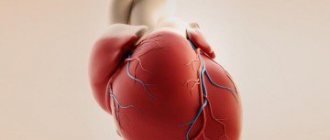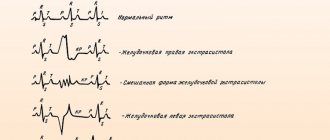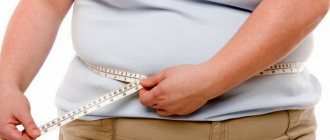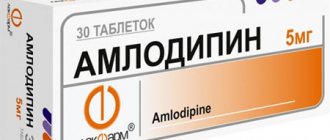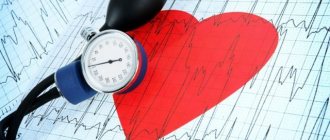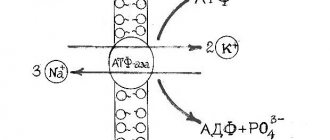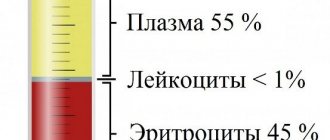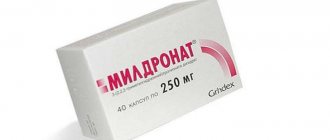Diagnosis of pathology
The classic method for recognizing arrhythmias is electrocardiography. Depending on the source of the pathological impulse causing premature contraction of the heart, supraventricular (supraventricular) and ventricular extrasystoles are distinguished. The supraventricular ones include atrial, extrasystoles from the A-V junction, as well as the much rarer sinus. One of the types of ventricular extrasystoles are stem ones.
Variants of extrasystoles from the AV node. a) the P wave has merged with the QRS complex, b) an altered P wave is visible after the QRS complex
All of them have specific ECG signs, which in most cases make it possible to confidently distinguish them from each other. But on a regular resting ECG, recorded within a few seconds, rhythm disturbances are often not detected.
Ventricular extrasystole
Therefore, the main method for diagnosing extrasystole is daily Holter ECG monitoring . Special equipment allows you to record all the electrical activity of the heart during the day, diagnose the type of extrasystoles, their number, distribution over time, connection with exercise, sleep, medication and other important characteristics. Only after this should drugs be prescribed for the treatment of cardiac extrasystole.
Treadmill test or bicycle ergometry
An additional method that helps determine the relationship between arrhythmia and exercise is a treadmill test or bicycle ergometry. This is a type of physical activity (respectively, walking on a moving path or simulating cycling), accompanied by constant ECG monitoring.
If a large number of extrasystoles appear during exercise or at rest, the functional diagnostics doctor reflects this in the conclusion based on the results of the load test.
The method of rhythmocardiography is becoming a thing of the past as it has not found any justified application in the clinic. However, in many medical institutions it is used and also allows you to detect extrasystoles.
Only after receiving a complete description of the extrasystole does the doctor begin treatment.
We recommend reading about atrial extrasystole. You will learn about the causes of its appearance, signs and symptoms in adults and children, diagnosis and basic treatment methods. And here is more information about emergency measures during an attack of atrial fibrillation.
Classification of medications
Antiarrhythmic drugs are different groups of drugs that have a similar mechanism of action for extrasystole. They differ in composition and mechanism of action, so the treatment regimen is selected individually for each patient. There are several main categories of these drugs, which can be aimed at the following purposes:
- decreased myocardial excitability;
- decrease in cardiac conductivity parameters;
- decreased heart rate - for this reason, medications can be used for tachycardia;
- weakening of the force of muscle contractions of the myocardium.
One of the purposes of using antiarrhythmic drugs is to restore normal heart rhythm. Medicines are most often prescribed for inpatient treatment and can be administered orally or intravenously. It is also possible to take them on an outpatient basis, but only in the absence of organic pathologies of the myocardium and in case of an acute attack of extrasystole. Previously, they are tested individually in the hospital, under the control of the GCG. Patients who are undergoing home treatment are recommended to undergo such examination at least once every 3 weeks to monitor the dynamics. In some cases, antiarrhythmic drugs are prescribed in a course to maintain sinus rhythm.
Sodium channels are found on the membranes of cardiomyocytes. Drugs in this group block such channels, thereby reducing the rate of depolarization of muscle fibers. As a result, membranes are stabilized and normal heart rhythm is restored. Sodium channel blockers have different intensities, which is why they are usually divided into 3 separate subgroups.
This group includes the following drugs: Novocainamide, Aymalin, Disapyramide, Quinidine and their analogues. They have moderate sodium channel activity and occupy an intermediate position between the other two subclasses. Additionally, these drugs can block calcium channels. As a result of their use, a decrease in conductivity indicators is observed in a number of systems: the Hiss bundle and Purkinje fibers, the ventricles and atria.
These drugs are fast-acting and also reduce the rate of depolarization and promote the opening of potassium channels. Their speed depends on the clinical picture and the severity of myocardial damage. If there are no organic changes, the effectiveness of the drugs is low. Their effect is enhanced by changes in the heart muscle. This group includes a number of drugs: Lidocaine, Difenin, Mexiletine.
This group remains the most effective in stopping attacks of extrasystole, and is also used to prevent atrial fibrillation. They have a pronounced effect on depolarization processes and do not affect repolarization. Representatives of this subclass are Propaphenone and Lappaconitine. The first additionally shows signs of beta-blockers, the second produces the opposite effect.
Beta-1 adrenergic receptors are located in the myocardium. Their activation leads to the release of adrenaline - its concentration in the blood can increase 4 times or more. This manifests itself in the following effects:
- chronotropic – increase in heart rate;
- inotropic – increasing the strength of contractions;
- increased myocardial demand for oxygen and nutrients;
- acceleration of the pulse, if there is a predisposition - a manifestation of arrhythmias.
Beta blockers reduce the effect on adrenal receptors, thereby blocking the production and release of adrenaline. After their use, a slowdown in heart rate and a decrease in its intensity, as well as a decrease in excitation processes, are observed. Representatives of this group are Propranolol, Practolol and their analogues.
The refractory period is the period of time during which the membrane, after an action potential, relaxes and restores to its original state. It is due to the peculiarities of the potassium-sodium channels and is regulated automatically. However, some drugs can influence these indicators, thereby providing longer rest for the myocardium. These include Tosylate, Bretilin, Ibutilide, Sotalol and their analogues. Amiodarone has a similar effect, but it also exhibits the properties of alpha-blockers. Such drugs are rarely used to treat extrasystole because they can cause dangerous side effects.
Calcium channel blockers are Diltiazem and Verapamil. These drugs reduce the transport of potassium through the membrane, which is manifested by a slower heartbeat and a decrease in excitation processes. They are prescribed to correct the patient’s condition during extrasystole, as well as to prevent atrial fibrillation and supraventricular tachycardia. They should be taken only under the supervision of a doctor, since violation of the dosage or regimen can lead to dangerous complications.
Treatment
Approaches to the treatment of supraventricular and ventricular extrasystoles are somewhat different. This depends on the effectiveness of different groups of antiarrhythmic drugs and the benefits of eliminating precipitating factors for rhythm disturbances.
Lifestyle
For any type of extrasystole, the patient is recommended:
- eliminating emotional stress factors;
- avoiding excessive physical activity;
- refusal of toxic substances - nicotine, stimulants, alcoholic beverages;
- reducing caffeine consumption;
- increasing the content of potassium-rich foods in the diet.
If supraventricular extrasystole
Typically, this type of rhythm disorder occurs with almost no symptoms. Sometimes there is a feeling of palpitations or interruptions in the functioning of the heart. It is not dangerous and has no clinical significance. They do not need to be treated, except in cases where they precede the development of supraventricular tachyarrhythmias or atrial fibrillation. In this case, the choice of drug depends on the arrhythmia being provoked.
For supraventricular extrasystole, drug treatment is prescribed if the rhythm disturbance is poorly tolerated.
Many cardiologists prefer to use long-acting selective beta blockers in this case. These drugs have virtually no effect on carbohydrate metabolism, blood vessels and bronchi. They act throughout the day, allowing you to take them once a day. The most popular drugs are metoprolol, nebivolol or bisoprolol. In addition to them, inexpensive but quite effective Verapamil can be prescribed.
Additionally, if there is a fear of death or poor tolerance to interruptions, valerian, motherwort, Novo-passit, Afobazol, Grandaxin, Paroxetine can be prescribed.
If ventricular extrasystole
A small number of ventricular extrasystoles is not dangerous to health. If they are not accompanied by severe heart disease, drugs for the treatment of ventricular extrasystole are not prescribed. Antiarrhythmics are used for frequent ventricular extrasystole.
Mostly for the treatment of very frequent ventricular extrasystole, surgery is used - catheter ablation (cauterization) of the focus of pathological impulses. However, medications can also be prescribed, primarily class IC and class III:
- etmozin;
- etacizin;
- propafenone;
- allapinin;
- amiodarone;
- sotalol.
Class IC drugs are contraindicated after myocardial infarction, as well as in conditions accompanied by dilation of the left ventricular cavity, thickening of its walls, decreased ejection fraction, or signs of heart failure.
Useful video
For information on what treatment methods for extrasystoles are currently used, watch this video:
The main drugs for the treatment of extrasystole
Bisoprolol (Concor) is most often used to eliminate the supraventricular form of arrhythmia. It is a beta blocker that suppresses sensitivity
corresponding heart receptors.
Beta receptors are also located in blood vessels and bronchi, but bisoprolol is a selective agent that selectively acts only on the myocardium.
If the disease is well controlled, it can be used even in patients with asthma or diabetes.
To achieve the effect, bisoprolol is used once a day. In addition to suppressing arrhythmia, it slows the pulse and prevents angina attacks. It lowers blood pressure well.
The medicine should not be used in patients with edema and shortness of breath at rest (circulatory insufficiency of classes III - IV), with sick sinus syndrome and resting pulse less than 50 - 60. It is contraindicated in atrioventricular block II - III degree, as it can strengthen it expressiveness. You should not take it if the “upper” pressure is less than 100 mmHg. Art. It is also not prescribed to children under 18 years of age.
In more than 10% of patients, especially those with heart failure, the drug causes a heart rate slower than 50 beats per minute. In 1 - 10% of patients, dizziness and headache occur, which disappear with constant use of the medication. In the same percentage of cases, there is a decrease in pressure, increased shortness of breath or swelling, a feeling of cold feet, nausea, vomiting, bowel movements, and fatigue.
Sotalol also blocks beta receptors of the heart and acts on potassium receptors. This necessitates its use for the prevention of severe ventricular arrhythmias. It is used for frequent supraventricular extrasystole, 1 time per day.
Contraindications for sotalol are the same as for bisoprolol, but long QT syndrome and allergic rhinitis are also added.
While taking this drug, 1 - 10% of patients experience the following undesirable effects:
- dizziness, headache, weakness, irritability;
- slowing or increasing heart rate, increased shortness of breath or swelling, decreased blood pressure;
- chest pain;
- nausea, vomiting, diarrhea.
Cordarone is usually prescribed for frequent supraventricular or ventricular extrasystole that cannot be treated with other drugs.
To develop the effect, you must constantly take the drug for at least a week, and then usually take 2-day breaks.
The drug has similar contraindications to bisoprolol, plus:
- iodine intolerance and thyroid disease;
- lack of potassium and magnesium in the blood;
- long QT syndrome;
- pregnancy, breastfeeding, childhood;
- interstitial lung diseases.
More than 10% of patients who use cordarone experience nausea, vomiting, abdominal discomfort, and increased sensitivity to sunlight.
In 1 - 10% of patients, the following unpleasant effects may occur:
- slow heart rate;
- liver damage;
- lung diseases, such as pneumonitis;
- hypothyroidism;
- discoloration of the skin in a grayish or bluish color;
- muscle tremors and sleep disturbances;
- decrease in blood pressure.
Antiarrhythmic drugs for extrasystole
For extrasystole, antiarrhythmic drugs are used depending on the source of extraordinary contractions (according to ECG data):
- supraventricular – Verapamil, Metoprolol;
- ventricular – Lidocaine, Difenin.
When prescribing treatment, the presence of heart and circulatory diseases is taken into account:
- blood stagnation, heart failure - Cordarone, SotaHexal;
- low blood pressure – Lidocaine, Allaforte, Celanide;
- angina pectoris, previous heart attack - Isoptin, Amiodarone, Atenolol;
- hypertension - Anaprilin, Verapamil.
These medications are not needed in all cases of detection of extrasystoles, since in the absence of heart disease they are limited to lifestyle changes (8-hour sleep, quitting smoking, alcohol, caffeine). Indications for taking antiarrhythmic drugs are:
- sensations of the patient in the form of a blow to the heart, interruptions, freezing, strong and rapid heartbeat after a pause;
- general weakness, anxiety, hot flashes, shortness of breath;
- circulatory disorders (more often with bigeminia - one normal beat and extrasystole) - headache, dizziness, attacks of loss of consciousness, disturbances in speech, movements and sensitivity in the limbs;
- suffered severe arrhythmia, performed resuscitation (extrasystoles can provoke fibrillation);
- complex forms of rhythm disturbances (for example, with QT prolongation).
Tablets for cardiac extrasystole
The prescription of tablets for cardiac extrasystole is carried out depending on ECG data and blood tests, since this is not a separate disease, but only a symptom. If the examination does not reveal diseases of the cardiovascular system, then the following medications are recommended:
- calming effect - Valerian, Novo-Passit;
- improving metabolism in the heart muscle - Riboxin, Kratal, Preductal, Actovegin, Mildronate;
- containing potassium and magnesium - Asparkam, Magnicum, Kalipoz prolongatum;
- omega-3 fatty acids – Omacor, Doppelherz Omega 3.
If hypertension, angina pectoris, inflammation (myocarditis, endocarditis) are detected, then all efforts should be directed towards treating the underlying disease. As the condition of the myocardium and blood vessels improves, extrasystoles will also disappear.
Rhythm disturbances can also be caused by:
- cough;
- lack of potassium;
- osteochondrosis;
- damage to the digestive system;
- dysfunction of the thyroid gland, reproductive glands, adrenal glands;
- taking medications;
- smoking, alcoholism.
Therefore, the success of treating this form of arrhythmia depends on identifying and eliminating the main cause.
Watch the video about the causes of arrhythmia:
How does the drug work?
Concor almost instantly blocks the effect of adrenaline on the heart. It is in the area where it is located that beta adrenergic receptors are located, which have increased sensitivity to adrenaline.
When adrenaline is released into the blood, frequent heart contractions begin (including extrasystole), blood vessels narrow, and blood pressure rises.
Thanks to Concor, which blocks the effects of adrenaline:
- the heart contracts much less frequently;
- coronary arteries actively dilate;
- general blood pressure decreases;
- heart rate stabilizes.
Medicines for supraventricular extrasystole
Supraventricular extrasystole is treated with beta-blockers for:
- rapid heart rate (tachycardia);
- attacks of angina pectoris, previous heart attack;
- rhythm disturbances due to stress, panic attacks, thyrotoxicosis, adrenal diseases.
The following drugs and initial daily doses are recommended:
- Anaprilin 30 mg,
- Atenolol 25-50 mg,
- Betaloc 50 mg,
- Bisoprolol 5 mg,
- Nebil 5 mg.
If necessary, the dosage can be increased by 2 times or a combination of a beta blocker and Sotalol, Amiodarone can be prescribed. If the patient has bronchial asthma or Prinzmetal's angina, then Isoptin or Diacordin are recommended. If extrasystoles occur at rest, Zelenin and Belloid drops are used at night. Teopek has worked well in low doses - 50 mg after lunch and before bed.
If supraventricular arrhythmia appears against the background of myocardial diseases, there is a risk of circulatory disorders, then Propanorm and Etatsizin are used. In most patients without heart damage, significant relief can be achieved with tranquilizers and antidepressants.
What to take for ventricular extrasystole
For extrasystoles that occur in the ventricles, take sedatives, antiarrhythmic drugs or a combination of 2 drugs. In asymptomatic cases, no medication is required. For single extrasystoles, diet, lifestyle changes, physical activity, sedatives and beta-blockers are recommended.
Drug of choice
The drug of choice for ventricular extrasystole is often a tranquilizer. It can be of plant origin - extract of valerian, hawthorn, motherwort, Fitosed, Persen, Novo-Passit. For neuroses and vegetative-vascular dystonia with a crisis course, synthetic drugs are also used - Afobazol, Clonazepam or Bellataminal.
How to treat single
For the treatment of single extrasystoles it is recommended:
- a diet rich in foods with potassium - dried apricots, baked potatoes, mushrooms, nuts, legumes, dried fruits, seaweed;
- cessation of smoking, abuse of coffee, diuretics, laxatives, alcohol;
- dosed physical activity - swimming, walking, light running (in the absence of contraindications);
- soothing - peony tincture, Corvalol phyto, Valocordin.
- beta blockers - Atenolol, Anaprilin.
Frequent extrasystole
For the treatment of frequent ventricular extrasystole, the following is used:
| Treatment | Drug names |
| Antiarrhythmic drugs in tablets | Diphenine, SotaHexal |
| Injections for dangerous forms (heart attack, severe myocarditis, complex arrhythmias) | Lidocaine, Cordarone, less commonly Novocainamide |
| Combinations of 2 drugs to reduce doses of each | Cordarone and Atenolol |
It is possible to reduce the risk of complications during ventricular extrasystole in patients with heart disease with medications that affect:
- blood clotting – Cardiomagnyl, Plavix;
- cholesterol level – Vasilip, Zocor;
- blood pressure – Prestarium, Enalapril;
- metabolic processes in the heart muscle - Preductal, Espa-lipon.
Interaction with other drugs
The active ingredient of Concor cannot be combined with many other medications. To achieve the desired result and avoid unforeseen consequences, you need to know which medications you should not take it with:
- If you combine Concor with Quinidine, Lidocaine, Propafenone, Diphenyl, your blood pressure may drop sharply and the frequency with which the heart muscle contracts will decrease.
- Medicines included in the group of calcium channel blockers are also prohibited from being taken together with Concor. Their interaction can provoke a decrease in myocardial contractility and a decrease in cardiac muscle contractions.
- Antiarrhythmic agents and cardiac glycosides together with Concor contribute to severe conduction disturbances, up to and including the occurrence of atrioventricular block.
- If you take anti-inflammatory drugs of the non-steroidal and glucocorticosteroid groups together with Concor, the effect of the latter will be significantly reduced.
In this video, a specialist talks in detail about the composition and effectiveness of Concor. How it affects the cardiovascular system and in what cases it will become an indispensable assistant.
How to relieve an attack: first aid for extrasystole
To relieve an attack of extrasystole, use the following first aid measures:
- sit the patient in a comfortable position;
- ensure the supply of fresh air;
- give water with 20 drops of a soothing tincture (motherwort, hawthorn, mint, valerian, peony) or Corvalol to drink;
- Place a Validol tablet under your tongue.
If the attack is accompanied by panic, trembling of the hands, strong and rapid heartbeat, then breathing into a paper bag or tightly closed palms helps (there should be no gap between them and the face).
Treatment of cardiac extrasystole with drugs
Medicines for the treatment of cardiac extrasystole are prescribed for frequent, dangerous forms, poor tolerance of arrhythmia, myocardial diseases, and the most common drugs are Anaprilin, Corvalol, Isoptin.
Anaprilin
Anaprilin during extrasystole helps reduce the effect of adrenaline and other stress hormones on the heart. It is effective for rhythm disturbances that occur during emotional stress and heavy physical exertion.
The negative effect of the drug manifests itself in extrasystoles that appear after meals, at night, and at rest. The dose is selected individually, but it is not recommended to slow the pulse to 50 beats per minute, and for elderly patients the lower limit is 55.
Corvalol
Corvalol during extrasystole acts due to a general calming effect; it does not have a specific antiarrhythmic effect on the heart. The reaction to stress factors decreases, the heart rate normalizes (with initial tachycardia). The drug can only be prescribed to patients without myocardial diseases - with neuroses, vegetative-vascular dystonia. Use is contraindicated in patients with:
- damage to the kidneys, liver;
- low blood pressure;
- severe attacks of angina pectoris;
- myocardial infarction;
- heart failure.
Isoptin
The medication is prescribed for extrasystoles, high blood pressure, and rapid pulse. It is indicated for patients who cannot use beta-blockers (bronchial asthma, fluctuations in blood sugar in diabetes, a tendency to allergic reactions). It can be recommended for patients with angina at rest and exertion (variant) with resistance to nitrates.
The most popular antiarrhythmic drugs
Pharmacies provide a wide range of antiarrhythmic drugs. The choice of a suitable remedy is determined by the patient’s condition and the results of his examination. In addition, during therapy, it is possible to replace the selected medication with one of its analogues if the effect of its use is insufficient. Among the most common drugs that are easy to find in pharmacies and which have proven themselves in the treatment of extrasystole, several options can be distinguished.
- Amiodarone (Cordarone) - combines the properties of all 4 groups of antiarrhythmic drugs and is available in tablet form. It is considered one of the most effective options. Its frequent use may cause side effects such as impaired functioning of the kidneys, liver and thyroid gland.
- Sotalol (Sotahexal) is a typical beta blocker, sold in tablet form. It is recommended to begin its use in a hospital setting, but it is also suitable for home use.
- Novocainamide is a drug from the group of sodium channel blockers. Its active ingredient, procainamide, belongs to subgroup IA. The product is available in the form of ampoules or tablets, suitable for use in inpatient and outpatient settings.
- Quinidine (Kinidin Durules) was previously the main antiarrhythmic drug. It is available in the form of tablets of 0.2 g and is easily tolerated in small dosages (up to 0.6–0.8 g). The product is made from the bark of the cinchona tree and exhibits the properties of sodium channel blockers.
Antiarrhythmic drugs used for extrasystole are a large group of drugs with different compositions and mechanisms of action. Despite the fact that this symptom is not dangerous and can be treated without treatment, medications should only be taken under the supervision of a doctor. The difficulty lies not only in selecting the most suitable substance and its dosage, but also in the need to regularly conduct examinations to prevent side effects.
Is it possible to cure extrasystole completely?
Since extrasystoles have a reason for their appearance, they can be cured completely if it is detected and eliminated. Drugs for arrhythmia cannot completely eliminate arrhythmia, but only eliminate the manifestations for the period of use.
It is important to take into account that without exception, all medications that normalize the frequency of heart contractions have serious side effects. Therefore, they are used only according to strict indications and in doses prescribed by a cardiologist. During treatment, ECG monitoring is important.
How to get rid of extrasystole forever
To get rid of extrasystole forever, patients without heart disease need to:
- make lifestyle changes - sleep at least 8 hours, stop working at night and shift work, and smoking;
- avoid physical, mental and emotional overload;
- stop drinking coffee, energy drinks and alcohol;
- reduce the use of drugs that can disrupt the heart rhythm (vasoconstrictor nasal drops with constant use, tonics, psychotropic drugs, potassium-removing diuretics, laxatives);
- complete a full course of treatment for the disease that caused the extrasystole;
- At least 2 times a year, a complete examination by a cardiologist is necessary, and, if necessary, an examination by a neurologist or endocrinologist.
Forecast
Supraventricular extrasystoles are not life-threatening. However, they may be the first symptoms of trouble in the myocardium or other organs. Therefore, if supraventricular extrasystole is detected, consultation with a cardiologist is required, and, if necessary, further examination.
If, according to daily monitoring, the number of ventricular premature contractions is 25% or more of the total number of heartbeats, such a load will ultimately lead to a weakening of the heart muscle. In this case, drug therapy is prescribed to prevent heart failure even in the absence of severe heart disease.
Therapy for supraventricular and ventricular forms
Ventricular extrasystole, occurring without disturbances in the structure of the heart muscle and without pronounced symptoms, does not require drug treatment. This condition can be eliminated by maintaining a healthy lifestyle and a balanced diet.
Arrhythmia, which is life-threatening and causes discomfort, needs to eliminate the symptoms of the disease by prescribing medications:
- soothing herbal, pharmacological sedatives, less often tranquilizers in limited doses;
- drugs that block receptors of adrenaline mediators (Obzidan, Anaprilin).
Often these measures are quite enough to reduce the intensity of heart contractions and the number of ventricular extrasystoles.
Antiarrhythmic drugs, in particular Mexiletine, Flecainide, are used in cases of ineffectiveness of adrenergic blockers and sedatives, when the patient’s health still continues to deteriorate while taking them.
Arrhythmia in combination with bradycardia is treated by prescribing cholinomimetic drugs (Belloid, Bellataminal, etc.).
The drugs are selected by the cardiologist individually for each clinical picture based on electrocardiogram data.
Therapy for supraventricular extrasystole is similar. Although this form of arrhythmia is one of the most complex, in most cases it does not disrupt the normal functioning of the heart muscle, does not pose a threat to life and does not require special treatment.

